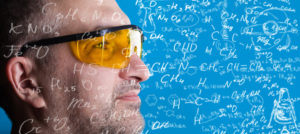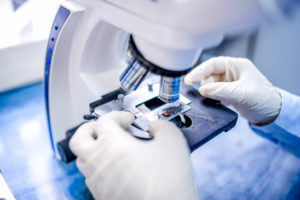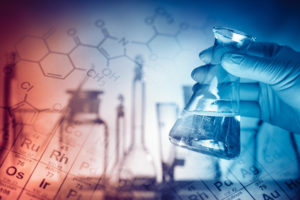 Nobody likes a copycat.
Nobody likes a copycat.
They’re boring. Tired from the get-go. Out to ride on somebody else’s coat tails. They want to steal some of the glory.
Is esketamine just a ketamine wannabe copycat drug?
You may have heard some things about it. Like it’s a nasal spray. Esketamine intranasal. It’s supposed to be an easier form of ketamine … a spray instead of an IV infusion. Small enough to slip into your pocket … dangerous enough to share or slip into somebody’s drink.
Maybe you’ve wondered how to find it. Or if it works like ketamine…? …or if it’s better? Drugs like esketamine are ketamine copycats …. wannabe’s ….. that are similar to ketamine but different, too. They’re in the works, up and coming and eagerly awaited — and you should know how they operate and their relationship to ketamine for depression.
So let’s get it out on the table about esketamine, and it’s counterpart arketamine, and answer some of those questions.
As you may already know, IV ketamine treatment for depression and other psychiatric mood disorders has been enjoying a groundswell of recognition and application across the US and around the world. More and more physicians are reading the literature, the clinical studies, talking to other physicians, and referring patients for this treatment — people who haven’t benefitted from traditional SRIs and SNRIs (serotonin and serotonin-norepinephrine reuptake inhibitor) antidepressants, and many of the other antidepressants and mood stabilizers on the market.
Skeptics Wait for the Copycats
Those who are reluctant to offer ketamine, or are skeptical about its safety in psychiatry, prefer to wait for newer medications to receive FDA approval.
So … ketamine was FDA-approved for use as in anesthesia for adults, adolescents, and children more than 50 years ago. And no pharmaceutical company will pay for the studies required to get this medication for anesthesia to be FDA-approved for a new indication — treatment of depression — because it can’t be patented again.
Typically, it’s the big drug companies that fund all those whoppin’ huge human trials needed for FDA approval of a new drug for a specific indication. They hope that if their drug is patented and then approved for a specific indication, the profits would not only reimburse the costs of trials, but rake in billions more.
They’re not interested in ketamine because the patent expired.
They’ll never spend the millions it takes to get it approved for depression or other psychiatric disorders because it went generic.
What big drug companies can do, and are doing, is making a very small change in the structure of generic ketamine that they can patent. And by patenting it, they can own it for years, fund studies, push for FDA approval for different indications or conditions … like depression … or suicidal thinking … and enjoy the profits that pour in.
It’s business. Drug companies aren’t Mother Teresa. Let’s just be honest.
So … how are the drugs they’re patenting and seeking FDA approval for related to ketamine, which is already available? How do they compare?
Esketamine Wants to be Better than Ketamine
Sometimes drug companies develop a “new” drug similar to an established drug by splitting it in half.
They can do this easily with ketamine because it’s racemic. That means it’s made of 2 mirror image molecules attached to each other. Sort of like Siamese twins.
If you were to split ketamine right down the middle, you’d have two “new” molecules that are mirror images.
The one  that’s facing left is the S molecule of the original one, S-ketamine or esketamine, and the one facing right is R-ketamine or arketamine.
that’s facing left is the S molecule of the original one, S-ketamine or esketamine, and the one facing right is R-ketamine or arketamine.
(OK … scientists aren’t creatives. Phonetic spelling is just fine.)
Interestingly enough, these two molecules behave differently from each other. What’s more, they both behave differently from original racemic ketamine compound.
This is pretty surprising because most people figure that mirror image molecules are identical in what they are and do … just maybe half as strong as the compound they come from.
Well, when joined together, esketamine and arketamine bring the balance to ketamine that makes it work so remarkably well. But unlike Siamese twins, when ketamine is separated in half, there are different sets of characteristics in each half.
And here’s where it gets interesting.
Mirror Image Twins – Completely Different Characteristics
Now, we know that ketamine is described as possessing rapid, robust antidepressant effects consistently in 75-80% of cases with treatment-resistant depression. Suicidal thoughts can evaporate. PTSD symptoms, anxiety, OCD, and even phobias relent.
When you slice the ketamine molecule in half, because it’s racemic, you get two molecules that are mirror images of each other. So how do they behave in comparison to ketamine?
- Arketamine is the phonetic name of “R” ketamine – the half (called the “enantiomer”) of the original racemic ketamine molecule that faces Right. Standing alone it is its own molecule, and presents its own strengths and weaknesses.
Arketamine is far less potent as an NMDA receptor antagonist than either ketamine. It possesses 4-5 times less affinity for the NMDA receptor — that means its binding or sticking power to the NMDA receptor is 4-5 times weaker. But this is surprising: its binding there is even 4-5 times weaker than its sister, esketamine. So, arketamine is very weak compared to esketamine as an anesthetic, analgesic, or sedative hypnotic drug.
But arketamine appears to be FAR more potent than esketamine as a rapid acting antidepressant.
Why?
It could be because it’s an AMPA receptor agonist. That means it’s an initiator or activator of the AMPA receptor. It’s less potent as a NMDA receptor antagonist, but shows stronger and longer-lasting rapid antidepressant actions than esketamine, so seems like more of an obvious choice for treating depression if a drug company wanted to develop and patent a ketamine mirror image molecule for depression. (We wonder why nobody is doing this.)
But again, ketamine has already mastered that job.
Arketamine is also considered more relaxing for the patient, less dissociative, and probably less likely to encourage abuse.
- Esketamine, on the other hand, is the phonetic name of “S” ketamine and is the half of the racemic ketamine compound that faces Left. Now, esketamine is a true-blue NMDA blocker. And … it’s 8 times more powerful as a dopamine reuptake inhibitor than its sister, arketamine.
Esketamine is far more potent as a NMDA receptor antagonist, and as such provides more benefit for pain relief, reward sensations … and a higher likelihood for abuse, but less benefit as an antidepressant.
Wait. How could that be?
FDA Approval Doesn’t Mean It’s the BEST
When a study was conducted to explore this, it turned out that ketamine’s antidepressant power isn’t caused just by its  inhibiting of the NMDA receptor — or even mostly by inhibiting it — but it acts in a number of ways including a super-important very cool way — by activating and sustaining a different glutamate receptor, the AMPA receptor, through a metabolite called hydroxynorketamine.
inhibiting of the NMDA receptor — or even mostly by inhibiting it — but it acts in a number of ways including a super-important very cool way — by activating and sustaining a different glutamate receptor, the AMPA receptor, through a metabolite called hydroxynorketamine.
This was a laboratory study, and although more studies are needed to verify this finding in humans, this is huge.
Really huge.
Because it seems like when you read about ketamine, and esketamine, you just hear about the NMDA receptor all the time. (Sometimes it’s called NMDAR so they don’t have to write out “receptor.”) As though it’s the new key to treating depression. The one new hot receptor that holds the key to the treatment of depression.
It’s so much more complicated than that.
Compared to ketamine, every other NMDA receptor antagonist drug that has been tested so far to treat depression and suicidal ideation has produced only modest results. They’ve kind of failed. They don’t work.
But researchers and the company making esketamine are betting that this one does.
Although esketamine is the weaker mirror image molecule for treating depression, it showed a 67% response rate when it was first studied as an IV infusion. It showed promise in FDA Phase II trials, and it’s the one now in FDA Phase III trials. It does other things, too, besides antagonizing the NMDA receptor … for instance, it increases glucose metabolism in the frontal cortex of the brain. Some think this action contributes to the tendency for esketamine to produce dissociative or hallucinogenic activity.
Of course, stronger hallucinogenic effects increases the likelihood of abuse.
We’re especially worried about this with a nasal spray.
Breakthrough Therapy Designation
In November of 2013 and again in August of 2016, esketamine received Breakthrough Therapy Designation by the FDA. For treatment-resistant depression the first time, and for treatment of major depressive disorder and imminent risk of suicide the second time. This status is given to a drug that’s urgently needed to treat a serious or life-threatening disease or condition and the drug has shown evidence for providing substantial improvement over existing treatments.
It helps expedite and remove delays and obstacles in the FDA approval process.
As I’ve mentioned before, lifting depression and suicidal thoughts are things that ketamine has already mastered. Everyone in the field and in the trenches knows this.
So back to the wannabes…
Currently, esketamine is in Phase III trials toward gaining FDA approval in the US, and 6 specific studies using intranasal esketamine are being conducted here … More than 30 have been launched in the US in the past couple of years and in Argentina, Austria, Belgium, Brazil, Canada, Czech Republic, France, Lithuania, Poland, Turkey, and the UK. The world is on fire with this. And the urgency is evident. Some studies center around using esketamine in intranasal form in conjunction with an SRI or SNRI. Interesting … but maybe not what you’d be looking for if those haven’t worked for you or you’ve had intolerable side effects.
Why the Focus on Esketamine…?
So back to the point. In spite of esketamine’s breakthrough status with the FDA, in spite of the fact that it comes from ketamine, it doesn’t seem to possess the characteristics that make ketamine so effective as an antidepressant.  Hmmmm. A recent paper in the journal Nature demonstrated that the NMDA receptor is, in fact, not the target for its antidepressant effects, but rather AMPA.
Hmmmm. A recent paper in the journal Nature demonstrated that the NMDA receptor is, in fact, not the target for its antidepressant effects, but rather AMPA.
Esketamine doesn’t have much impact on AMPA receptors.
As you can see, the studies (and the controversies) go on. There’s huge interest in ketamine, ketamine-like drugs, glutamate and AMPA receptors, and the way up and coming antidepressants work — and different opinions about this — around the world. Neuroscientists pore over the data, set up new preclinical and clinical studies, check and double-check each other’s findings around the world. Drug companies hope their own candidate for FDA approval will come out on top.
So Why Arketamine and Esketamine: Ketamine Wannabe Copycat Drugs?
Since ketamine already has all the features we want, and esketamine seems to have far weaker antidepressant benefits, why don’t we stick with what we KNOW works great?
Well, let’s be honest. Because of money. FDA approval means that insurance companies will probably pay for esketamine to be used in depression, and that makes it available to people who don’t live near a ketamine clinic or who cannot afford ketamine infusions that aren’t covered by insurance. And convenience — no needles, no IVs. And I predict that the pharmaceutical company that’s promoting FDA approval for esketamine will market it as superior, safer, and readily available.
But is it superior? That hasn’t been tested yet in a head-to-head study.
It’s half the molecule…it drips, it runs down your nose or down your throat if it’s not aimed right…it’s not as reliable…it’s not as bioavailable…it still has the same side effects…and it may not work as well.
Gee.
Cheap Ways to Make Billion$
Janssen is doing the same thing with ketamine.
Tiny Adjustments = Recycling
So drug companies recycle: they split old molecules, or try to invent a new delivery system….you know…they make something extended release, controlled release, change the release mechanism, turn it into a patch, or into a nasal spray.
Ultimately they want to make their drug available, bring it to more people, offer something effective and safe and well-tested and versatile. These are all good things. With esketamine … get it FDA-approved as a nasal spray. Small enough to slip into your purse like a lipstick. Well-known enough to have patients clamoring for it after they see it advertised on TV.
Risk, addiction, and rape could be just around the corner … with a spray.
Combined as ketamine, esketamine and arketamine together are a powerful weapon team against treatment-resistant depression, suicidal thinking and intention, and chronic – as well as emergent – pain. Physicians administer it — in carefully controlled, supervised, and safe settings in hospitals, clinics and offices. Separated … well … now you know some of the positives and the pitfalls.
A New Era
This is the era of ketamine look-alike drugs, because ketamine has changed the world of psychiatric mood disorder treatment for the better. In the coming years, we’ll see more drugs approved that work off the basic premise that makes ketamine so life-changing.
We’re excited about that — we’re all over it, because we want to see people get well.
And so we carefully evaluate the ketamine wannabes and copycats. And we ask … are they better? Safer? More effective? Longer lasting? More convenient? Riskier? Addictive? More dangerous?
At Innovative Psychiatry, Ketamine is Changing Lives
And in our practice, we’re so pleased to report consistent 80% responses in cases of treatment-resistant  depression and other psychiatric mood disorders.
depression and other psychiatric mood disorders.
If you still suffer after years of unsuccessful treatments, don’t wait. Innovative Psychiatry is all about finding a novel treatment, appropriate for you, that can make you feel truly better. More like you felt before depression ever knocked on your door the first time.
We’re here to treat you if you’ve suffered without relief for years.
When we first meet, I’m going to want to know about the best you’ve ever been. So we can both learn what it was like when you were your best self. And it will be our goal to help you reach that point again.
Call us. Schedule an appointment. Let’s work together to help you feel well again.
To the recovery of your best self,
Lori Calabrese, M.D.

woof! Thanyou for the info and not trying to take my liver or sell me a new house in the process.I have no pharmacy background, but can glean enough, but I got friends who do .
Thankyou and this was lightly positioned and well written. “Show me the pragmatics” (thankyou Jerry McGuire)
Did J and J reformulated esketamine to be easier on the bladder and kidneys than its cousin.
I don’t have a direct answer to this. Esketamine is one half of the ketamine molecule (it’s the left-sided half) and that is what J&J is working with; the esketamine dose that is being tested in clinical trials is quite low — and the dose of IV ketamine used for psychiatric treatment is also quite low. Neither approach the magnitude of ketamine exposure in people who abuse it recreationally, and thus far, the patients who have developed bladder symptoms and urothelial damage have a history of very high dose use over a prolonged period of time.
You did a wonderful job explaining the confusion of the mirroring of the racemic into two halves with their rotation forces. I had high hopes of esketamine now that is undergoing NDA at the FDA.
Not so much now. I was aware of APMA but not sure I understand. Could you please explain the allosteric mechanism of APMA that is said be a result of hydroxynorketamine metabolism from ketamine . It’s confusing. From what I understand, it seems that APMA requires NDMA activation (that is AMPA doesn’t exist without an NDMA receptor) but not vice versa as some NDMA neurons do not have APMA (silent neurons) and still remain glutamatergic. What exactly is AMPA? Is a part of the NDMA receptor or it’s own?
Lastly is possible that there could be a unknown synergic effect of ketamine (Dextro + Levo) combined where it is required to have both forms present to have the effect?
Thanks! Wow–these are great questions!
There are 3 kinds of glutamate receptors: NMDA receptors, AMPA receptors and kainate receptors. (Each kind has variants.) So AMPA receptors are just one of 3 kinds of glutamate receptor and they are different from NMDA receptors. They exist independently of NMDA receptors but they can be on the same cells next to NMDA receptors and they often are.
Even though there is so much interest in glutamate receptors, it’s the AMPA receptors that are really responsible for the majority of FAST excitatory transmission in the brain. And it’s the changes in AMPA receptors that are really at the core of synaptic plasticity. And long-term synaptic plasticity can last from minutes to a lifetime–a brilliant phrase that’s well known in neuroscience. Hold that thought.
Here is where it gets so exciting: a molecule (let’s think medicine) can bind to an NMDA receptor or to AMPA receptor or to either or to both. Sometimes, a molecule can bind to an NMDA receptor and when it does, the NMDA receptor tells the neuron to make more AMPA receptors and bring them up to the surface quickly–the numbers can increase rapidly, dramatically, and can stay high. This helps create quick responsiveness, flexibility, growth and change….and it can be for the long-term.
Ketamine binds to NMDA receptors. And for a long time, people thought this was why it helped with depression. But then a lot of other drugs that bind to the same place failed when tested in depression and function as antidepressants. Hmmm…
What we now know is that ketamine directly binds to AMPA receptors and directly increases their numbers and the phosphorylation of those receptors (i.e., the activation of them) — wow! If AMPA is a major player in plasticity (and it is!) and AMPA production, activation, and movement in neuronal members increases long-term synaptic plasticity (and it does!), it may help you understand why we are all so incredibly excited about using sub-anesthetic doses of ketamine for depression: because it not only directly activates NMDA receptors (which can up the number and the location of AMPA receptors on the same cells), and because it also directly activates AMPA. More action, more firing, more growth… more opportunity for flexbility of thought, more opportunity for the kinds of changes that people with depression want to see in their lives.
We see this every day in my office.
Finally, it’s possible that there is a synergistic effect when both the r- and s- forms (the dextro- and levo- forms) of the ketamine molecule are present — which is what we use in our IV ketamine infusions. I need to explore this more, and we need more research into which form of ketamine — the r-, the s- or the racemic compound — best activates AMPA.
Calling all neuroscientists!
Thank you for answering and enlightening me. To be honest, I am taken back at the clarity of your response. You have a fascinating way to simplifying things. A rare quality!
Ketamine would be a lot safer than direct immunotherapies to relieve inflammation (assuming excess exocytosis by glutamate excitation is the cause and reasons for ketamine effect). I imagine it can provide additional plasticity needed for memory formation and fear extinction through behavior trailing with plasticity (example: memories being represented through neurons). Do you believe it could be a potential adjunct to CBT? Do you have experience with its use in psychotherapies?
It’s kind of important not to underestimate the synaptogenesis as well because that has great implications.
Also can TMS be used with ketamine safely? Like as a follow up protocol? Have you had success with that approach?
Thank you again for your great answers!
Yes, yes, and yes! There is very exciting neuroimaging work with ketamine which was presented at the first International Conference for Ketamine and Related Compounds for Psychiatric Disorders which showed that IV ketamine treatment best opens up the Default Mode Network (DMN) 24 hours after a treatment — better than just after and better than 4 hours after an infusion.
What does this mean? The DMN is a network of neurons that are always firing in the background when you’re not doing or thinking about anything else. They’re the ones that are firing when you brood, ruminate, secretly feel terrible about yourself, can’t stop thinking about something….they are your default. When ketamine treatment can actively open up and provide a window of opportunity to modulate that firing a day after treatment, that means that 1 day later can be prime time for CBT. This is what the research suggests and this is super exciting! The day after treatment can be an incredibly fruitful time for a patient to do something new, stimulate their appetite for activity again, try to go out … or just pick up their clothes from the floor. It’s the best time to begin to activate so that you try not only to feel better but to live better. It may be the most opportune time to “change your stinkin’ thinkin.'”
In my practice, we encourage and try to to coordinate IV ketamine treatment with CBT and EMDR the following day. I can’t wait for more data to be presented about this — it’s really on the cutting edge!
Finally, TMS and ketamine:
I’ve treated patients who’ve failed a complete course of TMS )in the past or right before they saw me) who responded beautifully to ketamine. Hmmm… Did TMS right before ketamine really do nothing, or did it somehow help to enhance neuroplasticity that ketamine takes off and runs with? We don’t know. What I can say is that if TMS is effective and is doing something then patients should be able to point to the changes they feel. And if TMS has not helped them, they say so. So by the time they begin ketamine treatment, they don’t know and can’t appreciate if it “laid the groundwork” for ketamine to be effective. We need neuroimaging and much more research to investigate this.
What’s so interesting to me is what you suggest. (You have such great questions, and great ideas!) Could we do ketamine first, and then follow it up with TMS? Could we enhance synaptogenesis and then enhance or solidify the improvement with TMS because we know that “neurons that fire together wire together” …? That’s fascinating and there may be research groups that are already doing it.
I don’t often have patients who follow ketamine with TMS, and this may be why: if you respond to ketamine, you respond. And so you’re not really looking for more treatment at that point — you’re looking to jump back into your life. And then that treatment becomes the one that you’re like to go back to with a booster infusion (if you need one) because the response to a booster can be rapid and extraordinary.
TMS treatment is covered by many insurance companies, requires daily treatments 5 days a week, for several weeks. If patients don’t respond to ketamine and then immediately begin TMS and begin to respond…are they responding to TMS alone or did ketamine create dendritic growth that TMS capitalized on and ran with? This is a great question for research!
There was a lovely early paper published a couple of years ago describing a small group of patients who were treated with ketamine, TMS, and mindfulness meditation — a beautiful example of using neuroscience to research sequenced treatment so that we can put it to use in real life.
All very interesting and helpful. I’ve just completed a 12-dose cycle of Spravato, and I’ve seen no significant changes in my outlook or behavior. Yes, there were slight upswings here and there, but I believe these were due to a newfound hope which stimulated my desire to please those around me. Both my doctor and my loved ones claimed to notice a stark difference, but I truly believe in this case it was people seeing what they wanted to see, or seeing a result due to something other than the drug. For example, my husband had to take me twice a week. He travels more than 60% of the year. He sat with me for two entire hours and held my hand, twice a week. That alone, I believe, was the key factor in my elevated mood. Did I seem happier during these visits? Absolutely. My doctor doesn’t know me well enough to equivocally state Spravato was the cause of my elevated mood. She didn’t accompany me home, witness the aftermath, a repetition of life before the drug was introduced. I never experienced the often reported contrast in
mood, the uptick in motivation I so desperately hoped I would find. I fooled myself into believing I was doing better because everyone around me said I was. So, I marked the mood sheet accordingly, twos instead of threes.
I have read extensively about ketamine, in all its varying forms, including the actual studies themselves. I can find no evidence that s-ketamine is better than ketamine, and in fact, am just as curious as to why no one is treating with r-ketamine. And you wrote this article two years ago. Here, in 2019, r-ketamine is reported to have the highest benefits, though I can find no human studies. I was skeptical about s-ketamine from the start. I chose to move forward with the treatment because my insurance covered it and not ketamine.
My brother-in-law is an anesthetist and is highly in favor of ketamine over s-ketamine. When I shared with him the discouraging news that Spravato has not worked for me, he immediately suggested I contact a ketamine clinic and go from there. My psychiatrist, however, wants me to continue with additional treatments of Spravato, which she believes is better than ketamine. I know for certain she has attended a conference on the subject, which I can only assume was sponsored by the pharmaceutical company. I know she stands to gain a great deal by promoting Spravato.
And perhaps this is why I am skeptical. Upon arriving for my first treatment of Spravato, I was escorted to a back room and provided an upright chair in which to sit while the drug was being administered and during the two-hour observation phase. My psychiatrist’s nurse popped in occasionally to record my blood pressure while I tried my best to remain upright in the chair. Two thirds of the way through the treatment I brought a recliner and donated it to the office. My experience improved dramatically. It’s the little things that count. Like observing that CBT might be best administered exactly one day after treatment. Like personally taking the time to be present on all treatment days to speak with your patient for more than two minutes.
Now I am left with a decision to make. Your article recounted everything I have discovered these past few days. And your responses to questions asked helped me to ascertain your true devotion to your patients. I have yet to meet a psychiatrist I feel is truly invested in finding a way through this illness that has weighed heavily on me for as long as I can recall. I am 46 years old with half a life yet lived. I cannot imagine continuing in this manner for another 46 years.